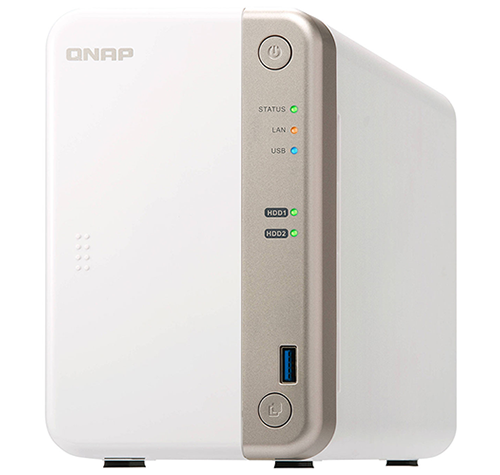Conclusion
...one of the more capable dual-bay solutions on the market today, with room to expand further down the line.There's no shortage of choice when it comes to dual-bay turnkey NAS servers, but in early 2019, the Qnap TS-251B has the makings of a particularly well-rounded solution.
Priced to compete in the £300 segment, this sleek unit presents a dual-core Intel Celeron processor and at least 2GB of memory in a familiar-looking chassis outfitted with multiple USB ports and direct HDMI 1.4b output.
There's nothing out of the ordinary as far as the core components are concerned, but when you add to the mix a feature-packed QTS operating system and a PCIe expansion slot, you get one of the more capable dual-bay solutions on the market today, with room to expand further down the line.
Increasing your budget can open the door to more powerful hardware, including quad-core processors, HDMI 2.0 and USB Type-C, yet at this price point, the Qnap TS-251B offers more than most and is easy to recommend.
PCIe slot and range of expansion cards
Solid all-round performance
Competitive price tag
No IR remote included
Qnap TS-251B
HEXUS.where2buy*
The Qnap TS-251B NAS is available to purchase from Scan Computers.
HEXUS.right2reply
At HEXUS, we invite the companies whose products we test to comment on our articles. If any company representatives for the products reviewed choose to respond, we'll publish their commentary here verbatim.
*UK-based HEXUS community members are eligible for free delivery and priority customer service through the SCAN.care@HEXUS forum.








